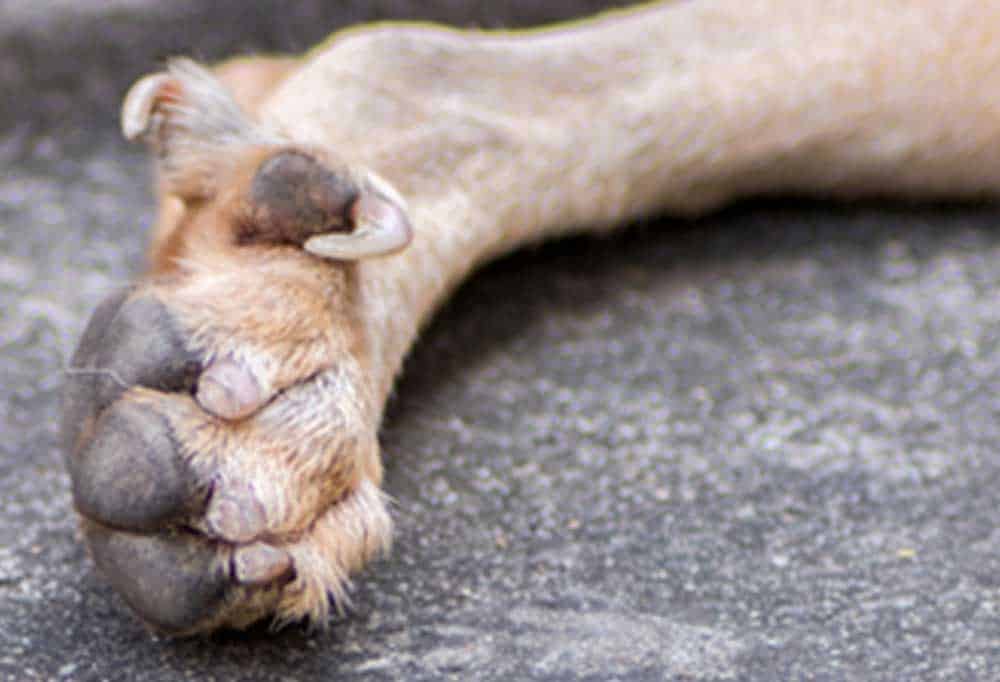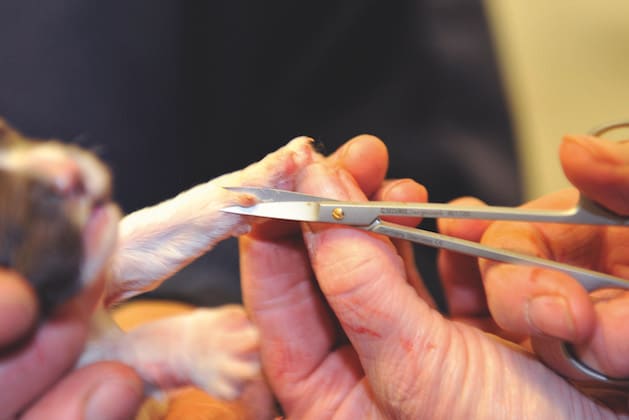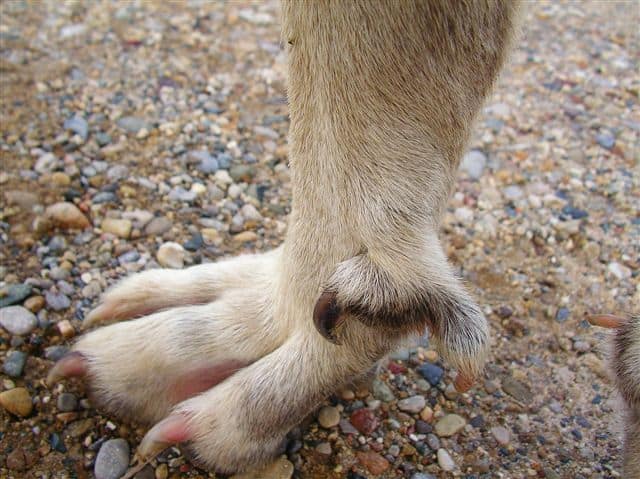Before buying your adorable puppy from the breeder, you requested them to remove dewclaws from your canine friend. You actually paid for the procedure.
Now, many months later, you cannot help but realize that one or more dewclaws have grown back. That cannot be good.
With all the dangers associated with overgrown and malformed dewclaws, you cannot risk ignoring the problem.
Does that mean the procedure wasn’t done to perfection? What can you do to correct the issue?
We discuss the answers to these questions in detail down below.
A Note about Declawing

From handling tools to buttoning shirts to typing essays, the human thumb does a lot for us. It is virtually impossible to imagine life without it.
For our dogs, the thumb (or as we know it, the dewclaw) has little to no function in the canine’s body. The front claw may help with grasping things but the dog can do without it.
On the flip side, it actually grows and gets stuck in carpets and rugs causing injuries to the poor dog.
In some cases, if the dewclaw is not removed, it circles around and ends up digging into the dog’s limb.
To avoid future problems, breeders often remove the dewclaw at about the third or fourth day of the pup’s life.
The procedure is simple and quick as the nail bed is softer at that time.
However, if a puppy doesn’t get her dewclaws removed during her first days of life, the vet can carry out the procedure during spaying or neutering.
Can Declaws Grow Back?

Ideally, when a pup goes through declawing, the entire nail bed is removed.
The vet sedates the dog and cuts through the nail past the skin, muscle, and finally the bone.
After removing the entire toe, the claw should not grow back.
Nevertheless, it is not uncommon for the toe to grow back. This happens when the procedure wasn’t done to perfection.
Often, this means the vet or whoever did the procedure didn’t get rid of all the cartilage containing the nail bed.
For puppies of less than five days of age, removing that last bit can be a real headache. Inexperienced pet parents and vets almost always miss it unknowingly.
When the declawing procedure doesn’t go as planned, it usually leads to the growth of a malformed nail. Rarely do you have a situation where the claw grows normally. After all, the muscular system and the blood work have been tampered with.
Oftentimes, the resulting claw will be thin and tiny almost like a tint French fry. It is also not uncommon to end up with a nail that is twisted and which makes it hard to trim.
What to Do?

When your fur baby suddenly has her dew claws grow back, it can be a very confusing time for the pet parent.
The first instinct would be to rush your pup back to the vet. However, in many cases, this is not really necessary.
If your dog is already neutered or spayed, it means taking her through anesthesia all over again. There’s absolutely no need to subject your dog to anesthesia unless you have to.
Before you decide on repeating the declawing surgery, first find out if the claw can be managed at home.
If it is small and linear then it can be trimmed alongside the other four toes. In that case, consider managing the dewclaw by yourself.
All you have to do is trim it occasionally to prevent it from overgrowing and ultimately causing injuries and pain to the doggie.
While you are at it, ensure you don’t cut through the quick. Some dewclaws grow back with the quick—the part of the nail that supplies nutrition and oxygen to the nail. If you accidentally clip it, your dog will bleed and feel an incredible amount of pain.
There are situations when the dewclaw needs to be popped once again.
Sometimes, the nail pushes the skin where the scar tissue is. Not only is this painful for the dog but it can cause more problems down the road.
Further, the whole process of cutting the dewclaw causes some muscles to be atrophied. This is because the muscle will not be in use adequately as was the original plan.
If this happens, the dog may suffer from complications like arthritis. This is particularly true for dogs that participate in agility sports and those that hunt frequently.
If this happens, organize with the vet to have your dog put under anesthesia and declawed once more.
If the dog is yet to be spayed or neutered, you can combine both procedures and kill two birds with one stone.
The healing process is often the hardest as adult dogs find it hard to leave the wound area alone but it will happen eventually.
Related Posts:
Closing Thoughts
Removal of dewclaws is designed to be a permanent solution to the problem of the extra claw. Yet, sometimes the procedure bears disappointing results.
If your dog’s dew claws grow back, enlist the help of the vet to know which one should be left alone and which warrants a second surgical operation.
Related Posts:
15 Things You Didn’t Know About Dog Nail Anatomy
Small Dog Breeds with Rear Dewclaws
As an Amazon Associate, we may receive a small commission from qualifying purchases but at no extra cost to you. Learn more. Amazon and the Amazon logo are trademarks of Amazon.com, Inc, or its affiliates.

